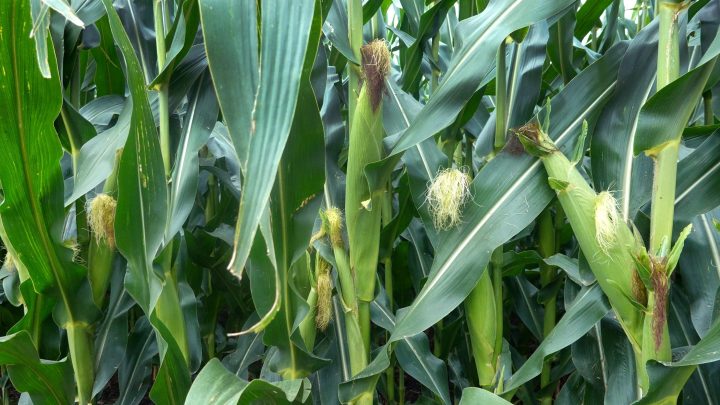
Why U.S. agricultural exports are down almost 20% from last year
Why U.S. agricultural exports are down almost 20% from last year

The value of U.S. imports fell between July and August — down 1.2%, according to the latest Commerce Department trade report. Meanwhile, U.S. exports ticked up 2.2%. All in all, nothing to write home about.
But when you dig a little further in the report, there’s one statistic that really stands out. Food exports, the Commerce Department says, are down almost 20%, compared to the same time a year ago.
Part of what’s going on has to do with the amount of agricultural products we’re sending overseas.
“We have soybean exports down, corn exports are down, wheat exports are down,” said Naomi Blohm, senior market advisor with Total Farm Marketing.
Blohm said one reason is that over the last year, American grain crops have been kinda lackluster.
“So far, everything is coming in where it rained, only average. Where it did not rain, it’s coming in substantially lower, which obviously makes sense. If you don’t have rain, it’s hard to grow a crop,” Blohm said.
Meanwhile, Blohm said American exporters face intense competition from Brazil, which has ramped up its own corn and soybean production. And that’s caught the attention of a big export market.
“China is buying larger amounts of corn and soybeans from Brazil, rather than the United States,” Blohm said.
It’s not just export volumes that have fallen. Ag prices have come down, too — on a global level.
Russia’s invasion of Ukraine had been pushing ag prices higher, said Joe Glauber, senior research fellow at the International Food Policy Research Institute and former chief economist at the Department of Agriculture.
“Certainly the first half of 2022, we saw very, very high prices,” Glauber said.
Glauber said Ukrainian wheat production is still down. But other countries have been producing more. Including Russia and some South American countries. And that’s relieved some of the pressure on global prices.
“Over the last 12 months, we’ve, you know, seen a decline. And we’re back not just pre-war levels, but even lower,” Glauber said.
That doesn’t mean that American farmers’ profits are taking a hit, said Aleks Schaefer, a professor at Oklahoma State University.
He said even though prices have come down from recent highs, “we’ve seen a reduction in a lot of those input costs. So fertilizer prices have really dropped this year.”
And even though U.S. farmers are exporting less, Schaefer said they can still sell those same products here at home.
“What we care about, is not whether our product goes on the international market, or the domestic market, what we care about is the price we’re receiving here,” Schaefer said.
And more domestic food supply could help take the edge off food prices in the U.S.
There’s a lot happening in the world. Through it all, Marketplace is here for you.
You rely on Marketplace to break down the world’s events and tell you how it affects you in a fact-based, approachable way. We rely on your financial support to keep making that possible.
Your donation today powers the independent journalism that you rely on. For just $5/month, you can help sustain Marketplace so we can keep reporting on the things that matter to you.

















